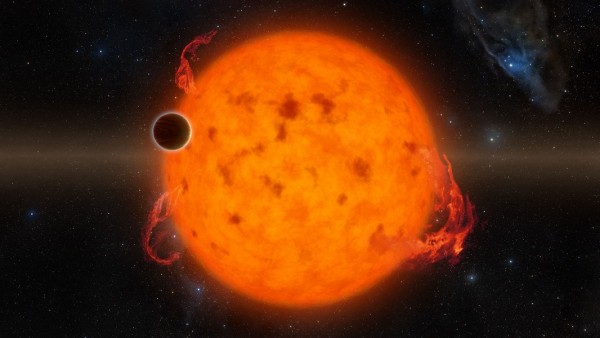Newborn Youngest Planet Ever Detected Provides Clues How Planets Form
| Ana Verayo | | Jun 21, 2016 04:20 AM EDT |
(Photo : NASA/JPL-Caltech) K2-33b, shown in this illustration, is one of the youngest exoplanets detected to date.
Astronomers have detected the youngest planet ever outside our solar system, that can provide new clues about how planets are formed and evolve through time.
To date, astronomers have already identified more than 3,000 exoplanets that are orbiting distant stars. However, almost all of these planets are the same age as Earth, which can no longer offer crucial clues how planets formed since they are already established.
Like Us on Facebook
In this new study, astronomers have detected the youngest exoplanet that had just been fully formed known as K2-33b, that is estimated to be around 5 to 10 million years old.
This baby planet was first detected by NASA's Kepler Space Telescope, as the telescope noticed some dimming as the planet transited or moved in front of its host star. These dips in brightness suggest how a planet is possibly orbiting its host star, as scientists from the W.M. Keck Observatory in Hawaii confirmed these findings.
According to author of the study, Caltech's Trevor David, Earth is considered to be a middle aged planet at 4.5 billion years old, around 45 years old for humans. In comparison, the baby planet K2-33b could possibly be an infant or just a few weeks old.
According to co-author of the study, Erik Petigura of Caltech, this is truly a remarkable discovery in exoplanetary science, as this newborn planet can greatly help in the understanding of how planets form, which can lead to more clues about understanding the origins of life and how Earth formed.
During the development of stars, they are first enshrouded in a protoplanetary disk of thick dust and gases, that eventually form planets. As this young star reaches a few million years old, this disk slowly disappears where the material from the disk has been absorbed, resulting in baby planets.
Now, the host star of K2-33b only possesses a small amount of disk material, based on observations from NASA's Spitzer Space Telescope, which suggests that the disk is already in its final stages of disappearing.
David adds how this region just completed its star making process, which is known as Upper Scorpius, where there are still a quarter of stars left that still possess bright protoplanetary disks. The rest of the stars do not possess such disks which means that planet formation is already completed in these regions, which offers a good chance of discovering new exoplanets here.
This new study is published in the journal Nature.
Tagsyoungest planet, baby planet, planet formation, Exoplanets
©2015 Chinatopix All rights reserved. Do not reproduce without permission
EDITOR'S PICKS
-

Did the Trump administration just announce plans for a trade war with ‘hostile’ China and Russia?
-

US Senate passes Taiwan travel bill slammed by China
-

As Yan Sihong’s family grieves, here are other Chinese students who went missing abroad. Some have never been found
-

Beijing blasts Western critics who ‘smear China’ with the term sharp power
-

China Envoy Seeks to Defuse Tensions With U.S. as a Trade War Brews
-

Singapore's Deputy PM Provides Bitcoin Vote of Confidence Amid China's Blanket Bans
-

China warns investors over risks in overseas virtual currency trading
-

Chinese government most trustworthy: survey
-

Kashima Antlers On Course For Back-To-Back Titles
MOST POPULAR
LATEST NEWS
Zhou Yongkang: China's Former Security Chief Sentenced to Life in Prison

China's former Chief of the Ministry of Public Security, Zhou Yongkang, has been given a life sentence after he was found guilty of abusing his office, bribery and deliberately ... Full Article
TRENDING STORY

China Pork Prices Expected to Stabilize As The Supplies Recover

Elephone P9000 Smartphone is now on Sale on Amazon India

There's a Big Chance Cliffhangers Won't Still Be Resolved When Grey's Anatomy Season 13 Returns

Supreme Court Ruled on Samsung vs Apple Dispute for Patent Infringement

Microsoft Surface Pro 5 Rumors and Release Date: What is the Latest?










